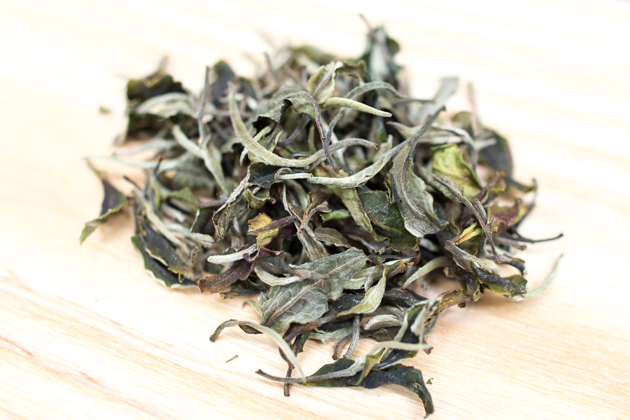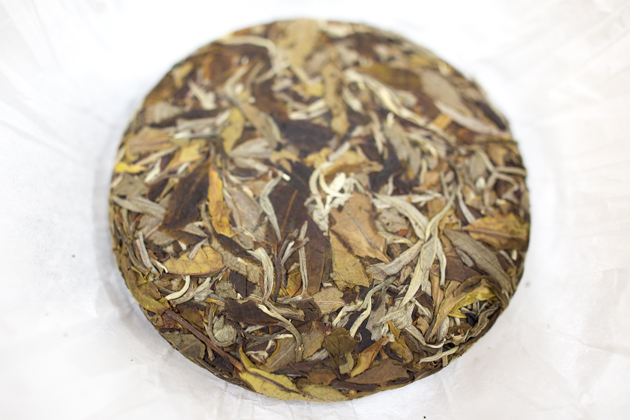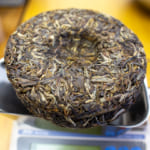- HOME >
- Types of Tea
3 Ways to Enjoy White Tea

Recently, white tea has been gaining popularity. However not many people are aware that there are different way to enjoy white tea.
White is White Tea?
The name as white tea, is defined by the way tea is made, not by its appearance or colour.
White tea is not rolled during tea processing. In making white tea, the fresh tea leaves are slowly withered to reduce its water content and this triggers enzymatic oxidation (fermentation). Finally, when the water content falls below 20%, it is dried to complete the process. There is no heat treatment involved, like roasting or steaming as other category of teas. Because of no rolling and no heating process, the downy hair of tea leaf or tea bud remains intact. It appears white as the name of white tea.
Because of no heating in process, enzymes (oxidizing enzyme) are not inactivated but to remains as it is. You have the better understanding of white tea if you are aware that enzymes remain active.
1.White Tea undergoes further oxidation during brewing
White tea contains an oxidation enzyme called polyphenol oxidase (PPO). It mediates the oxidation of tea.
With adequate level of moisture and temperature enzyme will be acitived. The enzyme is a type of protein. Therefore it is inactivated with hot water at above 60 to 70°C.
It is often thought that the enzyme will be inactivated if it is brewed with boiling water. But when boiling water is added to white tea, the temperature inside the tea leaves or stem does not rise immediately. In fact, the temperature gradually rises, so the enzyme rapidly activates and it causes further oxidation (fermentation).
For this reason, white tea brewed with hot water changes to beige brown, and has a slightly fruity scent like Darjeeling black tea.

Brewed Tea leaf of white tea with boiling water
When brewing white tea, I rapidly heat up tea with boiling water so as to stop the enzyme as soon as possible. It allows us to enjoy more floral-fruity scent and keep the fresh taste of tea.
To be specific, the brewing is detailed as follow:
1. Preheat the tea ware with boiling hot water for 10-15 seconds.
2. Put the tea leaves into the teapot, pour boiling water into the tea pot, put on the lid and leave it for 10 seconds then pour off the hot water.
3. Pour boiling hot water again, and discard in 5-10 seconds again.
4. Finally, brew tea with the hot water for about 10 seconds.
When you brew white tea at lower temperature, the temperature rises slowly and the enzymatic oxidation proceeds rapidly, so the aroma changes drastically.

2.Bright green and refreshing scent when brewed with cold water
On the other hand, the enzymes stay non-activated if white tea is brewed in cold water. In this way, we can enjoy the original taste of white tea with cold water brewing.
When white tea is brewed with hot water, the brewed tea leaf turns yellowish beige colour, while the cold water brewed white tea remains fresh green colour.
White tea brewed with cold water has a completely different taste and aroma from white tea brewed with hot water. The cold brewed white tea has a refreshing scent like flowers and shiso leaves.
I put 5g of tea leaves in 1-2 litres of cold water and leave in the refrigerator for half a day to overnight. It is advisable to remove the brewed tea leaf when tea is ready.

The cold water brewed white tea leaf remains fresh green because of no enzymatic oxidation takes place.
3.The aged white tea develops sweet fruity flavour like grapes
White tea is also a tea that you can enjoy by aging it just like Pu-erh tea. It is said that white tea has the oldest history in tea world, and in the old days, unintentionally people were drinking aged white tea.
Since white tea is produced with very light fermentation and without heat, it is rich in polyphenols with a low degree of oxidation. The constituents of white tea are close to the properties of white wine and have a large growth margin for aging. Therefore, when tea is aged for a few years, it develops a sweet and rich aroma that new tea does not have. To understand the wonderful effect of aging white tea, firstly drink the freshly-made white tea, and keep one unopened pack for a few years. You will be surprised that white tea ages faster and more obviously than Pu-erh teas.
When white tea is aged for a few years, it develops sweet fruity scent like grapes, tropical fruits, and nectars, and also it gives a smooth and mellow drinking sensation.

I prefer more delicate and refined aging, so I keep tea oxygen-free. However, aerobic aging (with oxygen/air) is a more common practice in tea world, which means tea is exposed to air for many years.
The aging speed under aerobic environment is overwhelmingly faster, but it forms a sour taste, multiple noise in flavour and astringency at the same time. On the other hand, oxygen-free aging has a slower aging rate, but it composes fresher, more refined and very sweet-fruity flavour. For those who wish to produce very refine sweet flavour, it is recommended that HOJO white tea be kept unopened. If you want faster aging and does not mind some noises in taste and flavour, please open the bag and seal it back after tea is being aged.
Related Articles
How to get the latest update on HOJO?
1. Follow Twitter, 2. Click "Like" on Facebook, and 3. Subscribe in newsletter. You can have the latest tea news from HOJO.
 Subscribe the Newsletter to enjoy the privileges
Subscribe the Newsletter to enjoy the privileges- You may receive a free sample upon purchase, or you may have the priority to purchase special products. So please remember to subscribe our newsletter as well as the social network.
- New Arrival of Akitsu Mumyoi and Nosaka Rough Clay Teapot
- A wide selection of teaware by Watanabe Tozo, a Sado-based artist of Mumyoi-yaki, has just arrived. This time, …
- Mang Fei Ripe Pu-erh Tea 2023 – Small-Batch Production from a Renowned Region
- Mang Fei Ripe Pu-erh Tea 2023 is now available. This is one of the highest-quality ripe pu-erh teas among our …
NEW ARTICLES
 Development of Firewood Roasted Hojicha Using Naturally Grown Tea from Yunnan
Development of Firewood Roasted Hojicha Using Naturally Grown Tea from Yunnan- We are currently staying in Yunnan Province for tea production. As the season nears its end, tea trees with pa …
 Exploring the Food Culture of Yunnan: Where Minority and Sichuan Cuisines Meet
Exploring the Food Culture of Yunnan: Where Minority and Sichuan Cuisines Meet- We are currently staying long-term in Yunnan Province for spring tea production. On rainy days or when there i …
 New Arrival of Akitsu Mumyoi and Nosaka Rough Clay Teapot
New Arrival of Akitsu Mumyoi and Nosaka Rough Clay Teapot- A wide selection of teaware by Watanabe Tozo, a Sado-based artist of Mumyoi-yaki, has just arrived. This time, …
 Managing Yunnan White Tea — Insights from the Field
Managing Yunnan White Tea — Insights from the Field- Since March 25, we have been in Yunnan Province, fully engaged in the production of white tea. In this column, …
 Mang Fei Ripe Pu-erh Tea 2023 – Small-Batch Production from a Renowned Region
Mang Fei Ripe Pu-erh Tea 2023 – Small-Batch Production from a Renowned Region- Mang Fei Ripe Pu-erh Tea 2023 is now available. This is one of the highest-quality ripe pu-erh teas among our …
 Yunnan Tea Trends 2025: Insights from the Fields
Yunnan Tea Trends 2025: Insights from the Fields- Since March 25, we have been in Yunnan Province. We will stay here until May to conduct tea production, packin …
 Why Do Some Teas Taste Astringent? Exploring the Causes and Mechanisms of Astringency
Why Do Some Teas Taste Astringent? Exploring the Causes and Mechanisms of Astringency- Tea can range from having no noticeable astringency to possessing a very strong one. What causes this astringe …
 The Impact of Heat Sources on Tea Flavor
The Impact of Heat Sources on Tea Flavor- It is widely recognized that the material of a kettle plays an important role in shaping the taste of water fo …
 New Release of Tang Li Shan Ripe Pu-erh Tea 2023
New Release of Tang Li Shan Ripe Pu-erh Tea 2023- We have released the 2023 edition of Tang Li Shan Ripe Pu-erh Tea. Tang Li Shan refers to a mountain located o …
 The New Release of Dong Shan Raw Pu-erh Tea 2023 and Jasmine Silver Needle
The New Release of Dong Shan Raw Pu-erh Tea 2023 and Jasmine Silver Needle- We have released Dong Shan Raw Pu-erh Tea 2023 and Jasmine Silver Needle. Dong Shan Raw Pu-erh Tea 2023 We hav …
Category
- New Arrival at HOJO Online Shop
- Featured Articles
- Newsletter
- Types of Tea
- Origin of Tea
- Teapot and Tea Equipment
- Tea Column
- How to enjoy tea
- Tea Processing
- How to choose quality tea
- Tea constituents and functional effect
- Safety of Tea
- Foods
- Tea Business Operation
- Hobby and Outdoor Activity
- Ranking of Tea
- Video
- FAQ
- Media Release
Profile

- AKIRA HOJO
- I invite you to experience my tea selections.I was born in Nagano, Japan. In university, I studied agricultural chemistry, and I have the master degree in food science. I worked in Japanese food industry for 10 years. I involved in R&D, QC and QA. As a factory manager, I implemented ISO9000 series and managed the factory.
- The Art of Tea Magazine
- We posted the article on “The Art of Tea Magazine No.9, the magazine is published in Taiwan. We featured …
- New Straits Times
- The Malaysian National Newspaper, New Straits Times featured HOJO Tea on 17-Oct-2007.
Shop Info

Address:Lot No. T-215, 3rd Floor, The Gardens Mall, Mid Valley City, Lingkaran Syed Putra, 59200 Kuala Lumpur
Tel: +603-2287-4537
Business Hour: 10am to 10pm














